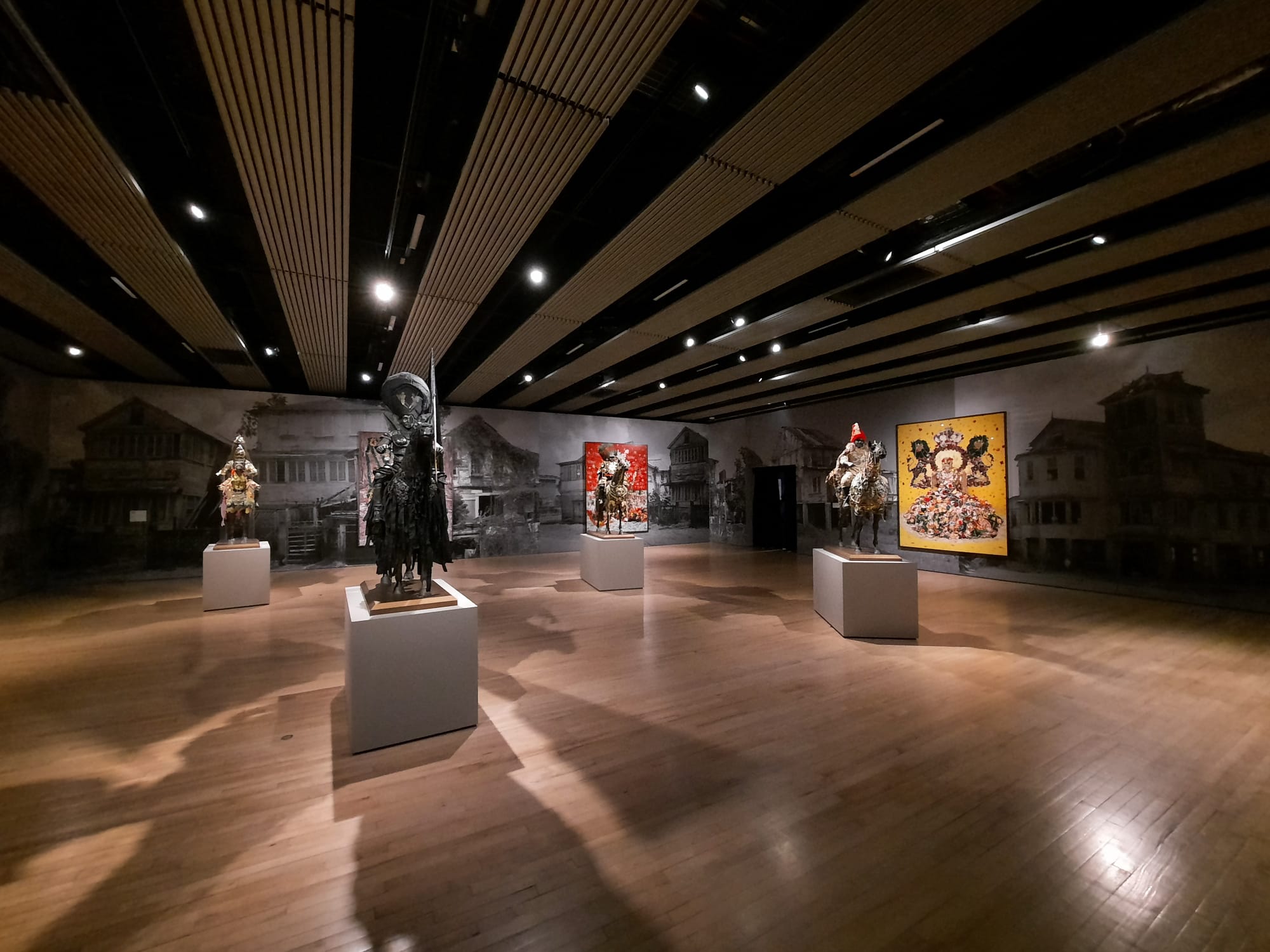In The Black Fantastic – Hayward Gallery, London
A review of In The Black Fantastic, an exhibition of art from the African diaspora which addresses racial injustice through myth and science fiction. The brutalist Hayward Gallery gives this art space for contemplation and appreciation.

In The Black Fantastic
When I want interesting, challenging exhibition programming, the Hayward Gallery is one of my London go-tos. (The Barbican is the other, in case you’re interested). It’s here that I see bold choices, new artists, unexpected curatorial points of view. Not that there’s anything wrong with seeing a nice monographic exhibition, there’s a time and a place for those. And not that the Hayward has the most radical curatorial practice I’ve seen (this exhibition at the ICA, for instance, went further). But the Hayward, at least in the last couple of years, are never boring.
And now we have In The Black Fantastic. Their own description calls it “the first major exhibition to gather together artists from the African diaspora who embrace myth and science fiction as a way to address racial injustice and explore alternative realities.” It’s not a movement or a static category, it’s a shared way of seeing. The Black fantastic rejects the constraints of a society mired in loaded and myopic understandings of Black people and Black culture. It sees race as the social construct that it is, embracing instead true creative freedom instead of accepted fictions.
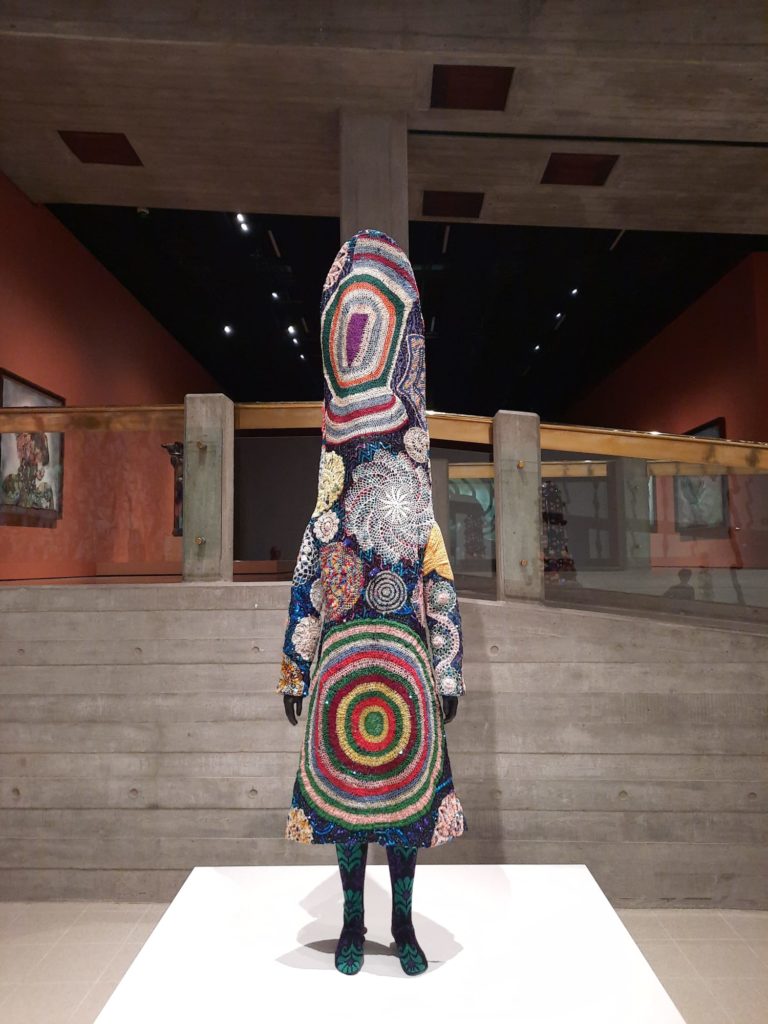

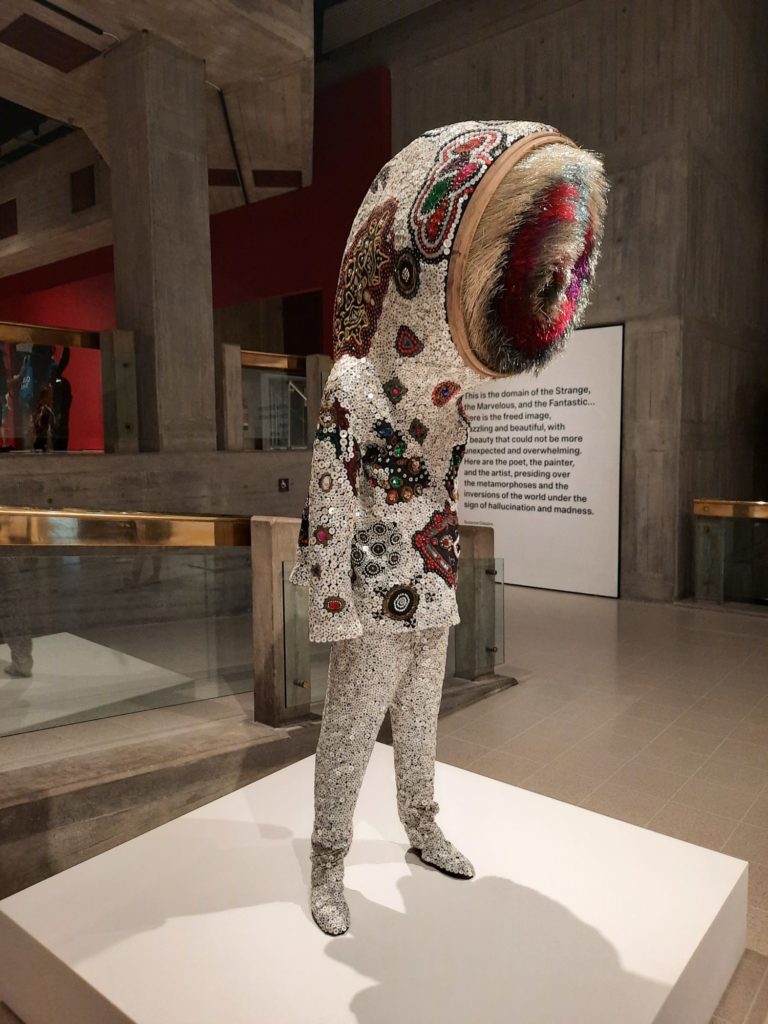
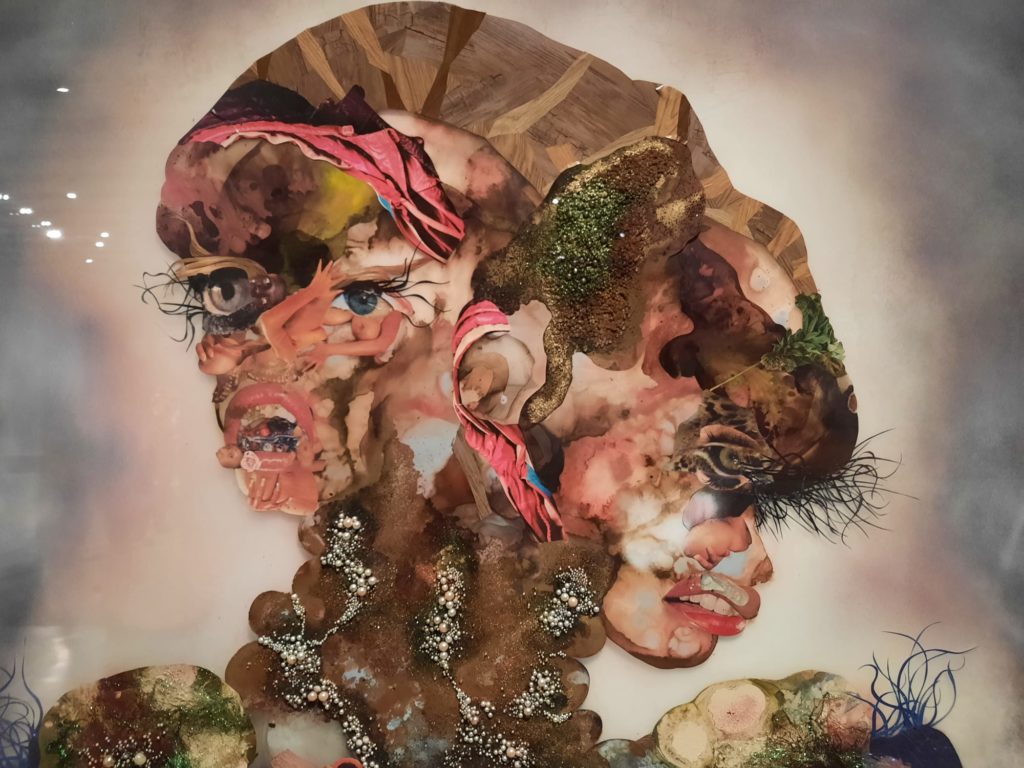


Curating The Black Fantastic
One might assume that curating an exhibition on the basis of a shared way of seeing might be challenging. One is probably correct. The way that exhibition curator Ekow Eshun has gone about it is to bring together a selection of artists from different contexts and at different stages in their careers. Each is allocated a space. We see either a single work (in the case of Tabita Rezaire) or a selection. We get to know them and their point of view, their perspective on the world. Over the course of the exhibition, we weave together a tapestry of all of these artists and get a sense of the Black Fantastic.
I was only previously familiar with the work of two artists included in the exhibition. Chris Ofili has taken stories from the Bible and the Odyssey and relocated them to Trinidad, where he now lives and works. New stories and meanings emerge from these familiar tales in a new context. And Kara Walker, who lives and works in New York, is represented here by an animation of her familiar silhouette cutouts. Prince McVeigh and the Turner Blasphemies re-enacts white supremacist violence and fantasy through the seemingly innocuous medium of shadow puppetry. Accompanied by a score by Minneapolis-based Lady Midnight, the work underscores the echoes of the past in the present.
The other artists were, for me, new discoveries. The exhibition opens with Nick Cave’s (not the musician) Soundsuits among other works by the artist. These wearable sculptures erase visible markers of gender, age and of course race. Their bright fantasy appearance works well to place the visitor immediately in a realm outside of ordinary experience, and to engage the imagination. Amongst the other artists I enjoyed the sumptuous textural qualities of Lina Iris Viktor’s canvases, the enigmatic dystopian vision of Hew Locke, Rashaad Newsome’s voguing futuristic performer. As I visited each room, each artist in turn, my mental picture of the Black Fantastic expanded one vision at a time.
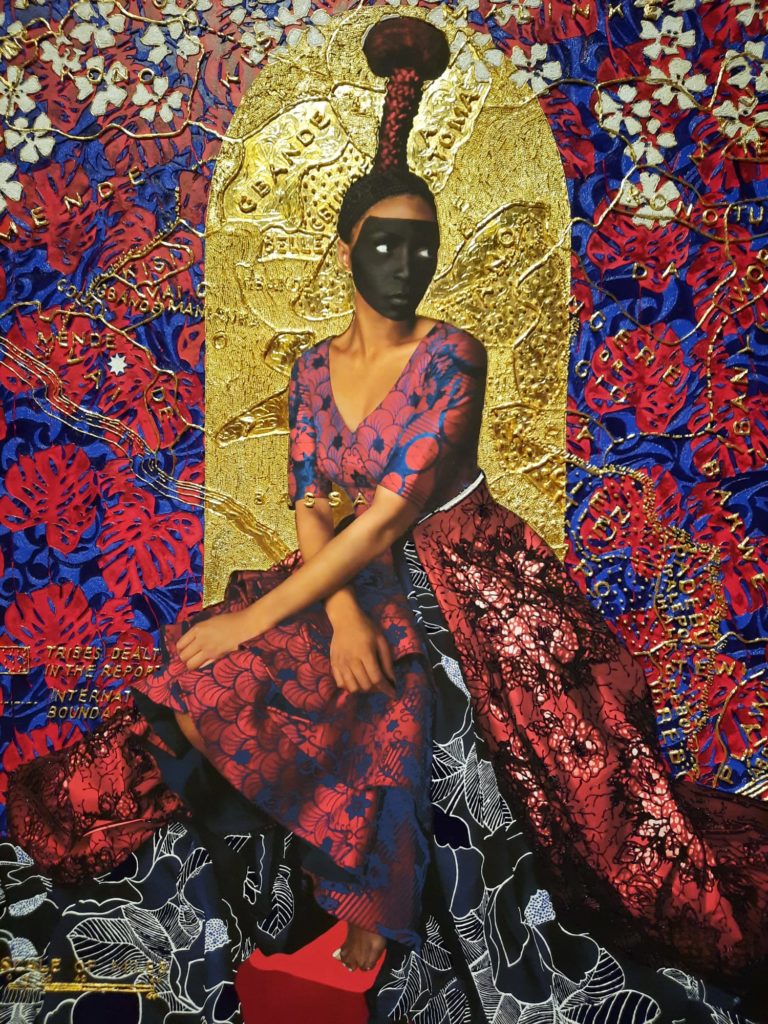
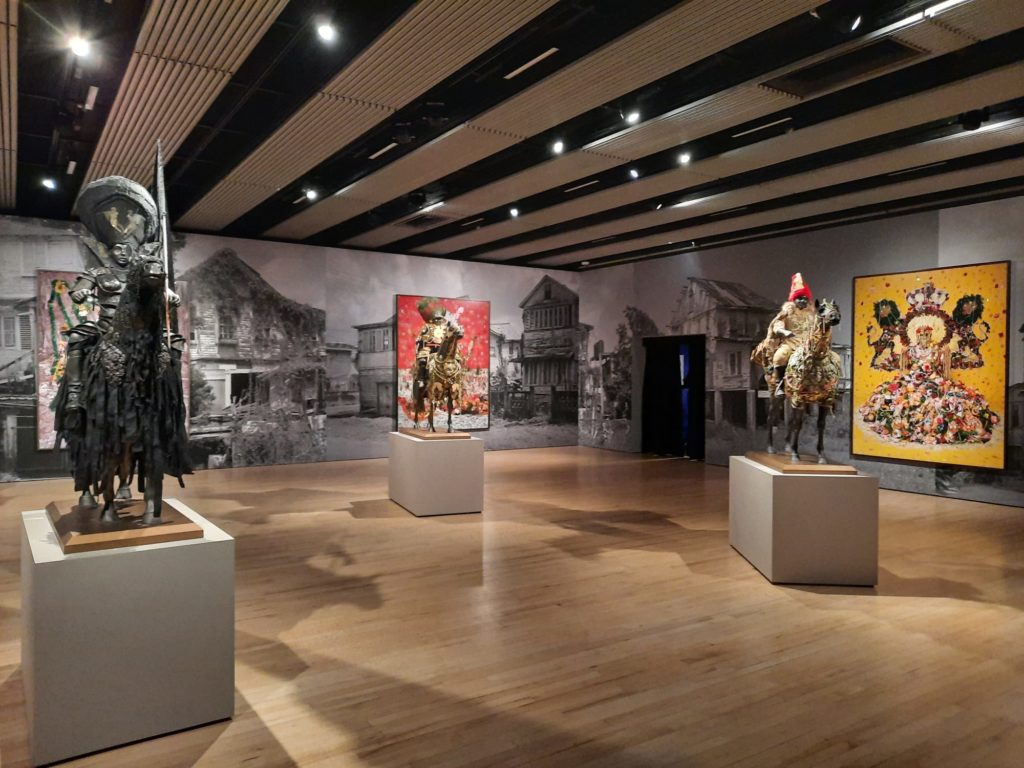
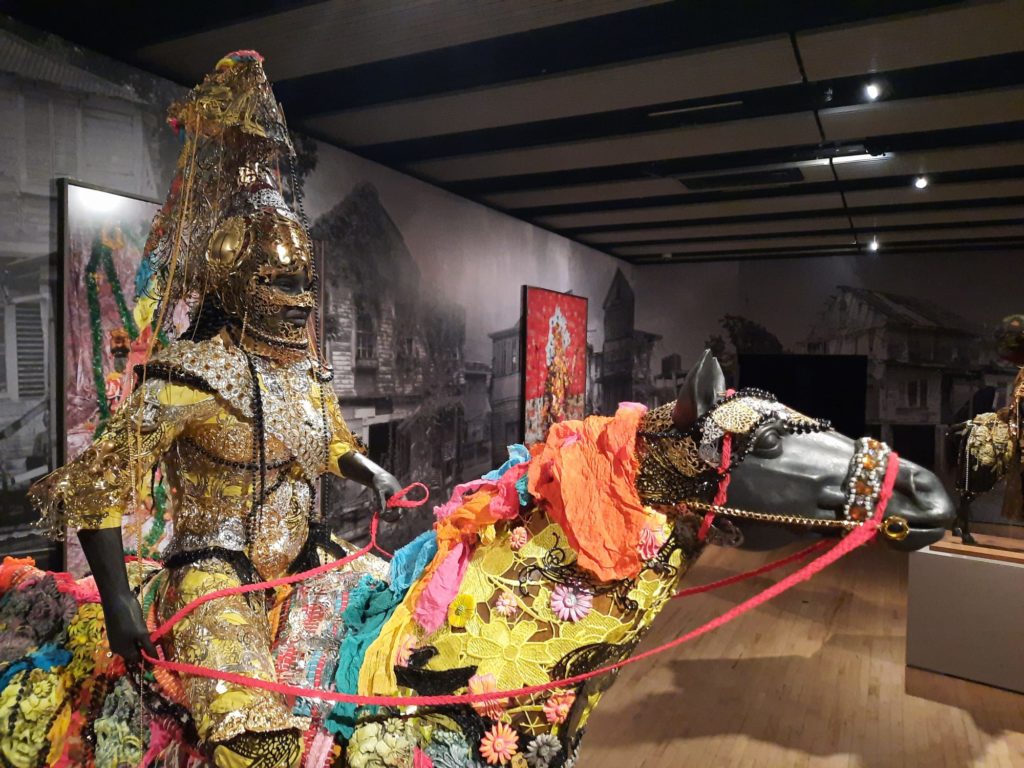

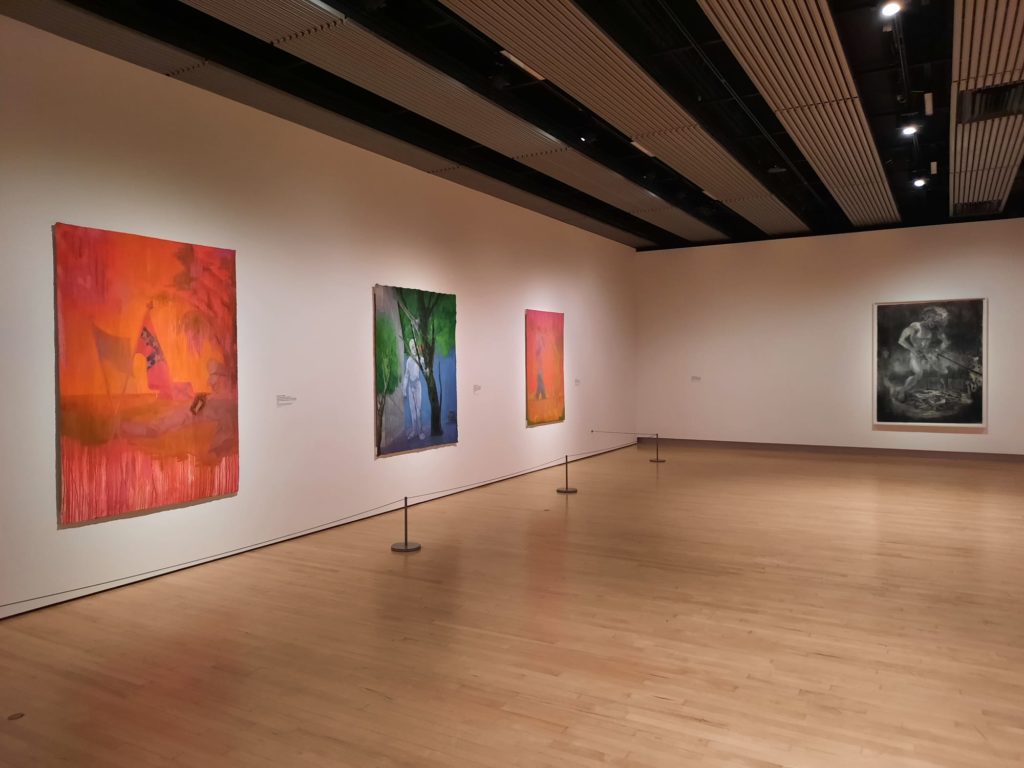

Ellen Gallagher
I would like at this point to pause in a bit more depth on the work of Ellen Gallagher. Born in 1965 in Rhode Island, Gallagher now lives and works between Rotterdam and New York. She was one of the artists whose work was not previously familiar to me, but is the one who made the greatest impression. She also, for me, encapsulated neatly what I understand the Black Fantastic to be.
Two series of works by Gallagher face off in the space allocated to her. Watery Ecstatic is a series of watercolours, and Ecstatic Draught of Fishes a painting series. The latter fascinated me utterly. Gallagher depicts an underwater world inspired by a mythical Black Atlantis called Drexciya. The name goes back to a 1992 techno album, and encapsulates an idea of an underwater Black civilisation descended from pregnant African women, enslaved then thrown overboard. Unspeakable acts become a narrative of transformation and survival.
Gallagher populates her underwater canvases with figures in palladium, their features based on ritual sculptures from Central Africa. They exist in their own world, rejecting Western modes of depiction as much as Western versions of history and ways of understanding the world. Alongside these works and one or two others of her own making, Gallagher has also selected a historic painting. At first glance Albert Eckhout’s painting of a Black Brazilian subject is intriguing, framed by a tropical landscape and a selection of local flora and fauna. Gallagher sees through this innocent interpretation and calls the painting out for what it is, “forensic evidence of the coming into being of the Dutch slave-labor camp” in their new colony.
Other artists in this exhibition include historic art or objects in their works or selections. But I found Gallagher’s contribution the most moving statement, and the clearest manifesto of what the Black Fantastic is to her. Really powerful stuff.


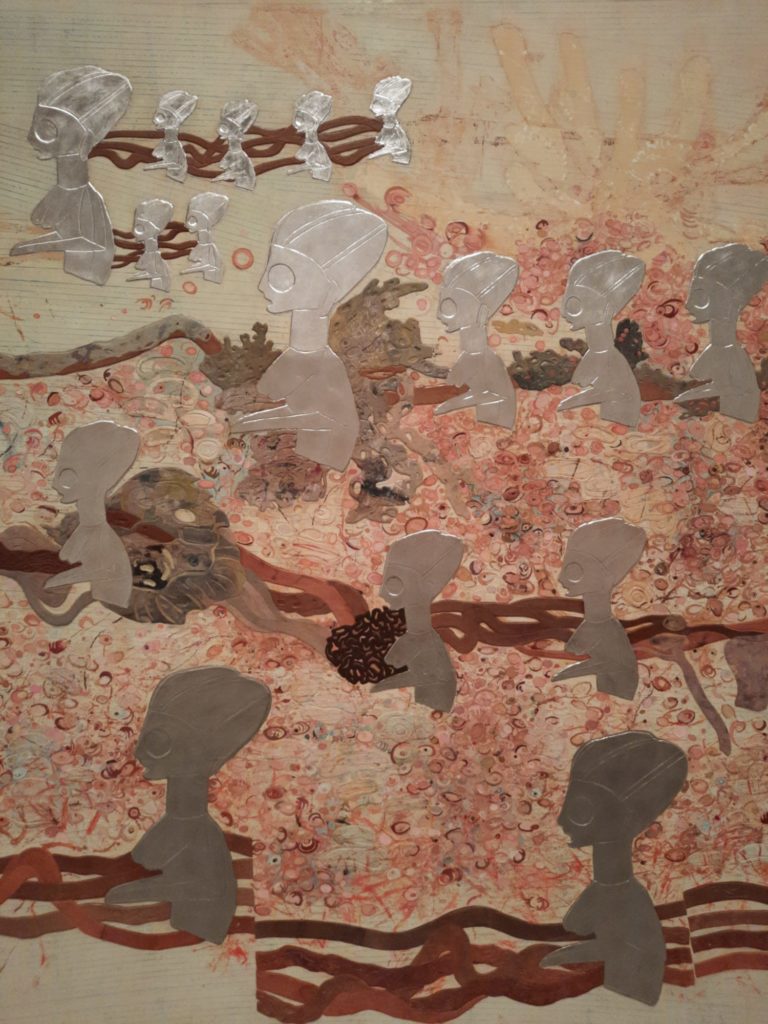

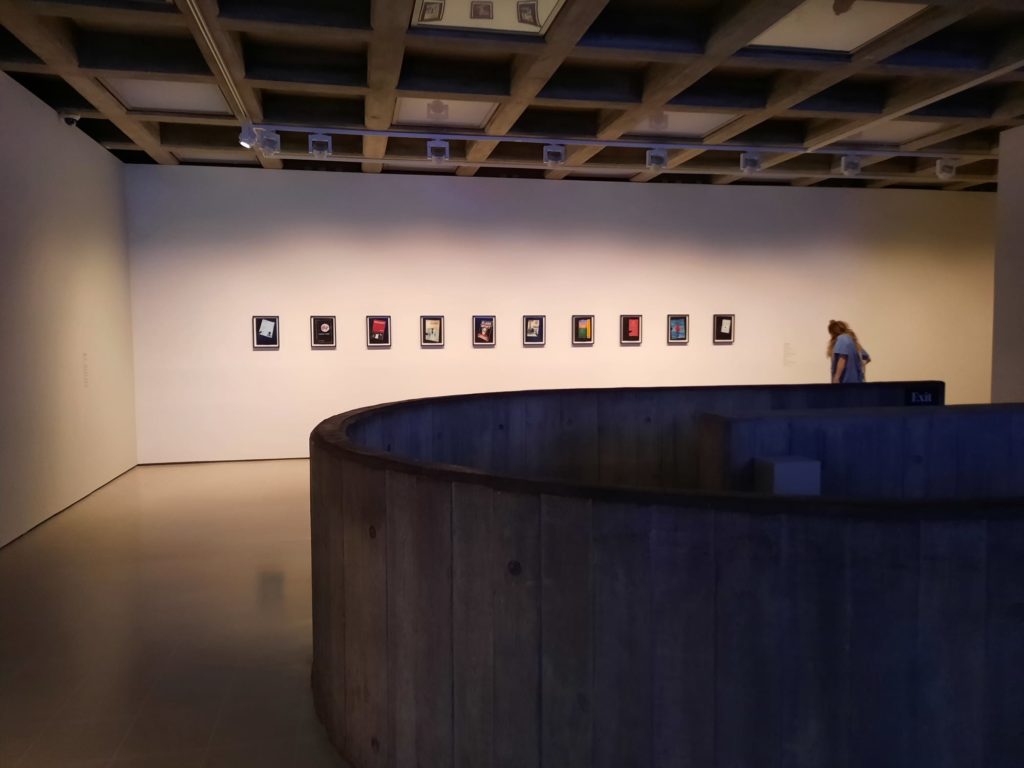

Final Thoughts On In The Black Fantastic
I really enjoyed this exhibition. I visited on a quiet Sunday morning, and so could take my time with each artist. For me it was a good opportunity to explore work by new (to me) artists. And the strong curatorial vision, bringing together artists from such different contexts and working in different styles and media, was a definite plus. It was also good to see that this exhibition draws in a slightly more diverse crowd than can sometimes be the case in London’s museums.
It’s not for everyone. As much as this is about alternative narratives and viewpoints, the exhibition touches on Black trauma in a way that may revisit old wounds for some viewers. Others will be challenged to expand their horizons in a way that may be uncomfortable. But those who want to learn and grow through art may find what they are looking for here. I certainly found it thought-provoking and challenging and interesting, all of which are positives in my book.
There are a couple of weeks left to catch this exhibition before it closes. If you’ve read something here that you liked, then get yourself a ticket. Best seen with a friend so you can talk through what you’re seeing and your responses to it.
Salterton Arts Review’s rating: 4/5
In the Black Fantastic on until 18 September 2022
If you see this after your page is loaded completely, leafletJS files are missing.

